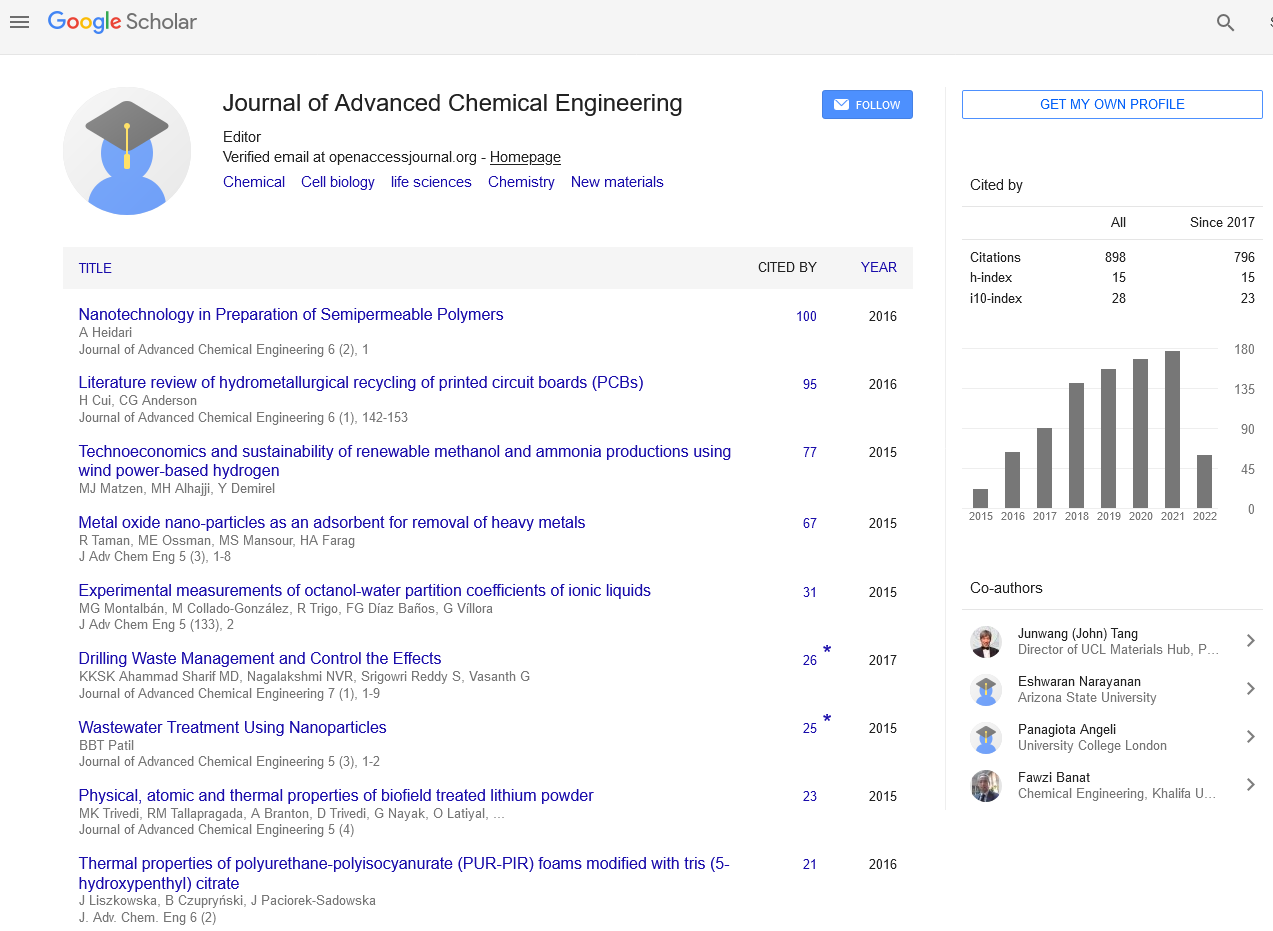Indexed In
- Open J Gate
- Genamics JournalSeek
- Smithers Rapra
- RefSeek
- Directory of Research Journal Indexing (DRJI)
- Hamdard University
- EBSCO A-Z
- OCLC- WorldCat
- Scholarsteer
- Publons
- Geneva Foundation for Medical Education and Research
- Google Scholar
Useful Links
Share This Page
Journal Flyer

Open Access Journals
- Agri and Aquaculture
- Biochemistry
- Bioinformatics & Systems Biology
- Business & Management
- Chemistry
- Clinical Sciences
- Engineering
- Food & Nutrition
- General Science
- Genetics & Molecular Biology
- Immunology & Microbiology
- Medical Sciences
- Neuroscience & Psychology
- Nursing & Health Care
- Pharmaceutical Sciences
Fabrication of reduced graphene oxide/chitosan-based conductive hydrogel for biomedical applications
2nd World Congress on Biopolymers
August 04-05, 2016 Manchester, UK
N Alemdar and C Uluturk
Marmara University, Turkey
Scientific Tracks Abstracts: J Adv Chem Eng
Abstract:
Recently, novel composite hydrogels are composed of biopolymers and conductive inorganic additives such as graphene (G) or graphene oxide (GO). G and GO have attracted great interests owing to their excellent properties such as high electric conductivity at room temperature, long term environmental stability, good electrochemical activity and biocompatibility of biopolymers, as well as unique electrical and chemical properties. Hydrogels obtained by using biopolymers and graphene/graphene oxide can be applied in many fields such as tissue engineering, electrochemical sensors and biosensors for the detection of certain special substances. In this study, reduced graphene oxide (RGO)-based conductive hydrogel was produced by photopolymerization technique. For this, glycidyl methacrylate was grafted on the chitosan backbone and following this, grafted product was exposed to UV light with poly (ethylene glycol) diacrylate to form polymeric network. Reduced graphene oxide at varying ratios was encapsulated into the polymeric network during the photopolymerization process to obtain conductive composite hydrogel. The fabricated conductive hydrogel with this way was characterized by FTIR, SEM, and XRD analyses. Swelling capacity of hydrogel was determined gravimetrically. Thermal behavior of conductive hydrogel was observed by TGA analyses. Conductivity measurements were carried out by 4-probe method. Results proved that thermal stability RGO-based conductive hydrogel improved significantly with respect to that of neat hydrogel. While the water uptake capacities of hydrogels decreased, the conductivity properties increased with increasing RGO content into the polymeric matrix. The highest conductivity value (1.71x10-3 S.cm-1) could be obtained when 10% wt RGO content was encapsulated into the hydrogel. The results ensured that RGO-chitosan based conductive hydrogel could be considered as a potential for biomedical applications.
Biography :
N Alemdar is currently Assistant Professor in the Department of Chemical Engineering at Marmara University, Istanbul, Turkey. She received her PhD degree from Istanbul Technical University in Chemical Engineering in 2009. During 2011–2013, she worked as a Post-Doctoral Fellow at Harvard-MIT Health Sciences and Technology Institute & Massachusetts Institute of Technology (Harvard-MIT) in Tissue Engineering Field (USA). Her research interests are focused on the synthesis of smart polymers and characterization and its application for different areas especially the fabrication of hydrogel for tissue engineering application and drug delivery systems.


